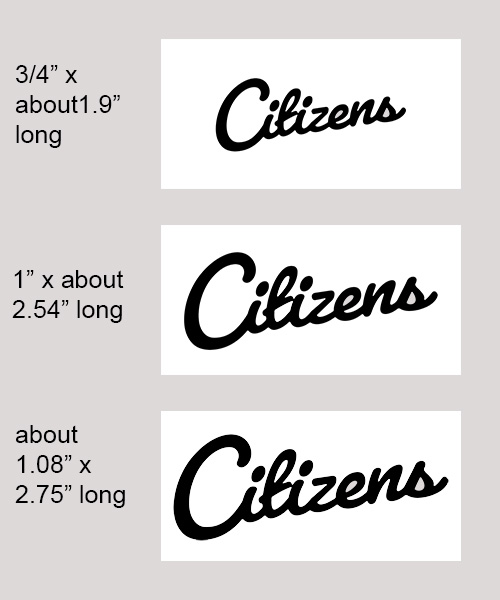Understanding Visual Branding
Visual branding is a critical aspect of a company’s overall brand strategy. It involves the use of visual elements such as colors, logos, typography, and imagery to create a distinct and memorable brand identity. Understanding visual branding is essential for businesses to effectively communicate their message, values, and personality to their target audience. What better way to enhance visual branding than with colorful ribbons.
One key aspect of visual branding is the use of colors. Different colors evoke different emotions and can convey various messages. For example, the color red is often associated with passion and excitement, while blue is often associated with trust and reliability. Choosing the right colors for a brand’s visual identity is therefore crucial in conveying the desired brand personality.
 Another important element of visual branding is the logo. A logo is a visual representation of a brand and serves as a symbol that customers can easily recognize and associate with the brand. Logos should be simple, unique, and representative of the brand’s values and identity. It is through the logo that customers can quickly identify and differentiate a brand from its competitors. We incorporate Pantone colors to really personalize the branding on your ribbon.
Another important element of visual branding is the logo. A logo is a visual representation of a brand and serves as a symbol that customers can easily recognize and associate with the brand. Logos should be simple, unique, and representative of the brand’s values and identity. It is through the logo that customers can quickly identify and differentiate a brand from its competitors. We incorporate Pantone colors to really personalize the branding on your ribbon.
The size of the image on the ribbon is also very important. You can go from a wide ribbon with a large image to a wide ribbon with a smaller image. The size of the ribbon and the size of the image on the ribbon makes a difference visually.
Typography is another key component of visual branding. The choice of fonts and typography can greatly influence how a brand is perceived. Fonts can convey a sense of professionalism, playfulness, or elegance, depending on the brand’s personality. Consistency in typography across all brand materials is crucial in maintaining a cohesive and recognizable brand identity.
Lastly, visual branding also involves the use of imagery. High-quality and relevant imagery can help to create a visual story that communicates the brand’s values and resonates with the target audience. Images should be carefully selected to align with the brand’s message and evoke the desired emotions.
In conclusion, understanding visual branding is essential for businesses to effectively communicate their brand identity and values to their target audience. By carefully selecting colors, designing a unique logo, choosing the appropriate typography, and using relevant imagery, companies can create a strong and memorable brand that stands out in today’s competitive market.
What is Visual Branding?
Visual branding encompasses the strategic use of visual elements to create a strong and impactful brand identity. It is a crucial component of any successful marketing strategy as it helps businesses establish a recognizable and memorable presence in the market. At its core, visual branding involves carefully selecting and consistently utilizing elements such as colors, typography, logos, and graphics that align with the brand’s values, personality, and target audience.
The goal of visual branding is to create a visual identity that is unique and instantly recognizable. By using consistent visual elements across all marketing and communication channels, businesses can build brand recognition and establish a sense of trust and familiarity with their target audience. It allows businesses to differentiate themselves from competitors and stand out in a crowded marketplace.
 Visual branding extends beyond just the company logo or website design. It includes the use of consistent visual elements in all marketing materials, including custom logo ribbon, packaging, social media profiles, advertisements, and even physical spaces. These visual cues help create a cohesive and unified brand experience for customers, reinforcing the brand’s values and messaging.
Visual branding extends beyond just the company logo or website design. It includes the use of consistent visual elements in all marketing materials, including custom logo ribbon, packaging, social media profiles, advertisements, and even physical spaces. These visual cues help create a cohesive and unified brand experience for customers, reinforcing the brand’s values and messaging.
When done effectively, visual branding can evoke emotions, convey professionalism, and communicate the brand’s unique selling points. It creates a visual story that resonates with customers and leaves a lasting impression. Ultimately, visual branding plays a critical role in shaping a customer’s perception of a brand, influencing their purchasing decisions, and fostering long-term loyalty.
In conclusion, visual branding is a powerful marketing tool that helps businesses create a strong and recognizable brand identity. By carefully selecting and consistently utilizing visual elements, businesses can establish a unique and cohesive brand presence that resonates with their target audience.
Why is Visual Branding Important?
Visual branding is crucial in today’s competitive business landscape. It is the key to creating a strong and memorable brand identity that sets a business apart from its competitors. When customers are bombarded with countless advertisements and brand messages every day, it becomes increasingly important for businesses to visually differentiate themselves and leave a lasting impression.
One of the main reasons why visual branding is important is that it helps businesses establish a sense of credibility and trustworthiness. A well-designed and consistent visual brand can convey professionalism and expertise, making customers more likely to trust a business and choose its products or services over those of competitors.
 Visual branding also plays a pivotal role in creating brand recognition and loyalty. When customers see consistent visual elements such as logos, colors, and typography across different platforms and touchpoints, it reinforces the brand’s identity in their minds. This familiarity not only makes it easier for customers to recognize and remember a brand but also builds trust and loyalty over time.
Visual branding also plays a pivotal role in creating brand recognition and loyalty. When customers see consistent visual elements such as logos, colors, and typography across different platforms and touchpoints, it reinforces the brand’s identity in their minds. This familiarity not only makes it easier for customers to recognize and remember a brand but also builds trust and loyalty over time.
Furthermore, visual branding has a significant impact on marketing and advertising efforts. A visually appealing and consistent brand image can capture attention and evoke positive emotions, making customers more receptive to marketing messages. It also helps businesses differentiate themselves in a crowded market, making it easier to target and attract the right audience.
In conclusion, visual branding is crucial for businesses seeking to establish themselves as credible, recognizable, and memorable brands. By investing in visual branding, businesses can create a strong brand identity, build trust and loyalty among customers, and stand out in the competitive marketplace.





